第161章
Most of the people here had never seen a pin, and the better informed took a pride in teaching their more ignorant companions the peculiarities and uses of that strange European production--a needle with a head, but no eye! Even paper, which we throw away hourly as rubbish, was to them a curiosity; and I often saw them picking up little scraps which had been swept out of the house, and carefully putting them away in their betel-pouch. Then when Itook my morning coffee and evening tea, how many were the strange things displayed to them! Teapot, teacups, teaspoons, were all more or less curious in their eyes; tea, sugar, biscuit, and butter, were articles of human consumption seen by many of them for the first time. One asks if that whitish powder is "gula passir" (sand-sugar), so called to distinguish it from the coarse lump palm-sugar or molasses of native manufacture; and the biscuit is considered a sort of European sago-cake, which the inhabitants of those remote regions are obliged to use in the absence of the genuine article. My pursuit, were of course utterly beyond their comprehension. They continually asked me what white people did with the birds and insects I tools so much care to preserve. If I only kept what was beautiful, they might perhaps comprehend it; but to see ants and files and small ugly insects put away so carefully was a great puzzle to them, and they were convinced that there must be some medical or magical use for them which I kept a profound secret. These people were in fact as completely unacquainted with civilized life as the Indians of the Rocky Mountains, or the savages of Central Africa--yet a steamship, that highest triumph of human ingenuity, with its little floating epitome of European civilization, touches monthly at Cajeli, twenty miles off; while at Amboyna, only sixty miles distant, a European population and government have been established for more than three hundred years.
Having seen a good many of the natives of Bouru from different villages, and from distant parts of the island, I feel convinced that they consist of two distinct races now partially amalgamated. The larger portion are Malays of the Celebes type, often exactly similar to the Tomóre people of East Celebes, whom I found settled in Batchian; while others altogether resemble the Alfuros of Ceram.
The influx of two races can easily be accounted for. The Sula Islands, which are closely connected with East Celebes, approach to within forty miles of the north coast of Bouru, while the island of Manipa offers an easy point of departure for the people of Ceram. I was confirmed in this view by finding that the languages of Bouru possessed distinct resemblances to that of Sula, as well as to those of Ceram.
Soon after we had arrived at Waypoti, Ali had seen a beautiful little bird of the genus Pitta, which I was very anxious to obtain, as in almost every island the species are different, and none were yet known from Bourn. He and my other hunter continued to see it two or three times a week, and to hear its peculiar note much oftener, but could never get a specimen, owing to its always frequenting the most dense thorny thickets, where only hasty glimpses of it could be obtained, and at so short a distance that it would be difficult to avoid blowing the bird to pieces. Ali was very much annoyed that he could not get a specimen of this bird, in going after which he had already severely, wounded his feet with thorns; and when we had only two days more to stay, he went of his own accord one evening to sleep at a little but in the forest some miles off, in order to have a last try for it at daybreak, when many birds come out to feed, and are very intent on their morning meal. The next evening he brought me home two specimens, one with the head blown completely off, and otherwise too much injured to preserve, the other in very good order, and which I at once saw to be a new species, very like the Pitta celebensis, but ornamented with a square patch of bright red on the nape of the neck.
The next day after securing this prize we returned to Cajeli, and packing up my collections left Bouru by the steamer. During our two days' stay at Ternate, I took on board what baggage I had left there, and bade adieu to all my friends. We then crossed over to Menado, on our way to Macassar and Java, and I finally quitted the Moluccas, among whose luxuriant and beautiful islands I had wandered for more than three years.
My collections in Bouru, though not extensive, were of considerable interest; for out of sixty-six species of birds which I collected there, no less than seventeen were new, or had not been previously found in any island of the Moluccas. Among these were two kingfishers, Tanysiptera acis and Ceyx Cajeli; a beautiful sunbird, Nectarines proserpina; a handsome little black and white flycatcher, Monarcha loricata, whose swelling throat was beautifully scaled with metallic blue; and several of less interest. I also obtained a skull of the babirusa, one specimen of which was killed by native hunters during my residence at Cajeli.